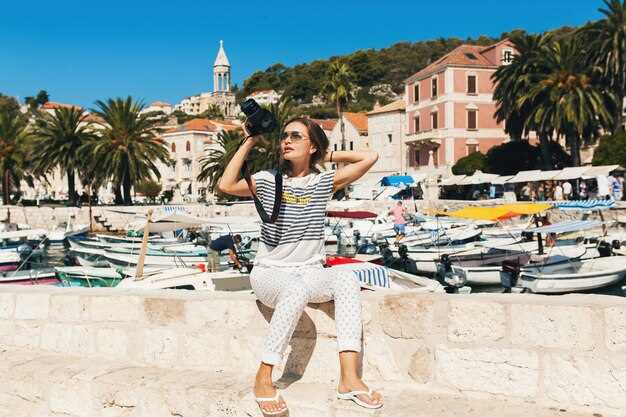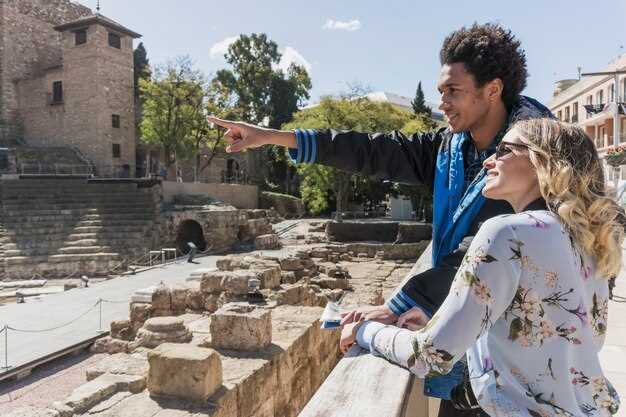Plan a dawn boat trip from göceks to witness first light over secluded coves, then enjoy breakfast on board and start your East Mediterranean itinerary with confidence. Licensed operators handle boats, safety gear, and island stops, and their services include snorkeling gear and shaded decks for rest between swims.
Visit Cleopatra’s coastal relics and climb a seaside castle to mark your progress with true views. theimussa cliffs offer quiet trails, and you can get closer to the water along a cliff path that reveals pink-tinged limestone and sapphire water; a shingle beach nearby invites a relaxed stroll between sights and other coastal spots.
During visits, hire a professional local guide who can translate inscriptions, share trade-route stories, and point out authentic stops beyond crowds. If you have been here before, this route still reveals fresh perspectives. Visiting hours for remote sites typically run from early morning to late afternoon; plan your pace to avoid midday heat and to catch cooler light for photos.
For active travelers, rent a kayak along a calm inlet or snorkel near a reef edge to spot schools of fish and living corals. In city markets, sample local treasures such as olives, honey, and fresh bread for breakfast; you can also buy fresh turkeys if you’re cooking at a family-friendly hotel.
Visiting smarter routes helps you avoid crowds and supports local economies. Mark a plan that includes a combination of coastlines and inland sites, then use a reliable app to track opening times and transport options. If you need help choosing, a professional travel advisor can tailor a route to your pace and interests and suggest nearby services and rest stops.
Sunday Focus: Practical Guide to Sights, Activities, and Travel Tips at Sarsala and Bedri Rahmi Bays
Plan your Sunday with a crisp route: park at the Sarsala trailhead, cover 1,600 meters along the cove through inviting pines, then reach Bedri Rahmi Bays for a water-side break. It took about 20 minutes to reach the top lookout; the return loop adds 900 meters.
Sarsala’s slopes rise behind the beach, offering breathtaking views from a 60-meter perch. The surrounds provide shade and a calm atmosphere, far from Marmaris hustle, giving you room to breathe and appreciate the coastline.
Bedri Rahmi Bays boasts clear water, a must-see shoreline, and rock formations that sparked local art. From Marmaris, day cruises pass by and offer a berth option; you can join a 1.5-hour ride or stay on land to kayak or stroll along the shore.
Facilities at the sites are practical: park near the main restaurant area, toilets are conveniently located, and camping is allowed at designated spots for night stays. Signs keep you oriented, the path remains friendly for families, and meters separate viewpoints for safety.
Shabnam settles on the water at dawn as you pass a stall with özsüt pastries, fueling your plan to explore the forests along the coast. The shore-friendly slopes invite short climbs, and you can return to Marmaris by late afternoon to catch a night ferry or board another cruise along the bay.
In Muğla province, Sarsala and Bedri Rahmi Bays provide a balanced mix of scenery and activities: hiking, boating, camping, or simply sitting by the water. The chance to see a quiet, inviting coastline makes a day here worthwhile for families and solo travelers alike.
Navigate Sarsala and Bedri Rahmi Bays: key beaches, rock formations, and lookout points
Begin at Sarsala Bay at sunrise to witness dramatic rock shelves, cream foam on the shore, and a shingle beach that stays pristine as light grows. Park near the trailhead and carry towels for a quick dip before you continue.
From Sarsala, follow the coast toward Bedri Rahmi Bay, where limestone arches frame the water and a large flat rock bears a mural by Bedri Rahmi Eyüboğlu. Reach a lookout above the cove to witness blue tones across the shore and the secrets tucked into the coastline. Nearby Roman-era remains add a touch of history to the scene.
Bedri Rahmi Bay offers a peaceful counterpoint to the busy spots, with calm coves ideal for swimming and shallow, rocky pockets that invite witnessing nature up close. For an example of dramatic contrast, climb to the higher vantage point to see how the region’s natures shift with light from dawn to dusk.
Plan a week of coastline explorations: pick up essentials at migros in fethiye, then map a loop that includes both bays and the connecting shore. Bring a couple of towels, water, and a light jacket for the cliff edge; choose moments of quiet to drop into the water or rest on the shore, and keep an eye out for hidden secrets along the way. If you want variety, other nearby coves offer additional thrills without crowding the main beaches, giving you a balanced, peaceful rhythm as you travel.
| Site | Key features | Best time to visit | Practical tips |
|---|---|---|---|
| Sarsala Bay | Shingle and sand shore, dramatic limestone shelves, sheltered coves, lookout point above the water | Early morning for calm water and clear light | Park at the trailhead, wear sturdy sandals, towels handy, consider a short climb for the view |
| Bedri Rahmi Bay | Large mural rock, sea cave, natural pools, rocky pier remnants, pristine coves | Late afternoon for warm colors; morning calm for swimming | Climb to the cliff lookout, bring water, watch waves near the shore and note the Roman-era remains |
Water adventures: safe swimming zones, boat rentals, and beginner-friendly kayaking
Begin with a sheltered, marked safe swimming zone near a marina in this region. The calm water inside the zone stays within 50 to 100 meters of shore during the hour when crowds are lighter, making it ideal for first-timers. The kelebekler coast offers enchanting sceneries and a friendly atmosphere, with landmarks such as a hillside church that helps you orient. Marinas welcome visitors with clear safety guidelines and modern facilities. To stay safe, keep within the marked area and drop anchor only where permitted; dropping anchor is restricted to designated spots, and give other swimmers enough space. Watch for fishing lines and stay aware of distance to nearby boats to maintain safety during your visit.
Boat rentals: To cover longer distances, head to the marinas and choose a gulet or gemiler charter. A gulet offers a relaxed pace along the coast, while a gemiler provides more maneuverability for shorter hops between coves. Follow the right of way rules; keep a safe distance from other craft and plan routes that stay within shore proximity. Payment is typically by hour or day; for example, many operators offer half- or full-day options, and next steps are shown at the desk. If you are new, request a captain or join a guided tour to learn their preferred routes and the distance to anchor points, ensuring confidence on the water.
Beginner-friendly kayaking makes the coast approachable for first-timers. Start with a modern, wide kayak for stability and soften your pace as you learn the current. Begin with a route of about 800 to 1,500 meters near the harbor, staying within sheltered water during the first hour. Stick to marked lanes, yield to larger boats on the right, and be mindful of fishing lines beneath the surface. The kelebekler region offers captivating sceneries and coves beneath limestone cliffs, a setting that welcomes quiet exploration and a relaxed atmosphere as you circle back to the marina.
Next steps and safety: carry a comprehensive safety kit and wear life jackets for all participants. Check the weather and wind since conditions can shift quickly; keep an eye on water temperature and plan your routes accordingly. Use distance markers on the map and note meters you cover so you can return with enough time to rejoin the harbor. In this region, payment at the counter covers gear rental and guides; different marinas offer flexible options aligned with your style. The region since ancient trade routes along the coast remains welcoming, and the atmosphere of marinas and churches along the route continues to draw travelers to modern adventures on the water.
Photo moments: top sunrise/sunset spots and quick composition tips
Start at Cape Sounion before sunrise to catch the open coast lit by the first light, a scene that sets the tone for coastal photography in greece.
- Cape Sounion, Greece – the open coast and rocky shore offer immediate foregrounds; place a wooden jetty or rock in the foreground to create depth and lead the eye toward the horizon. Use a wide lens (14–24mm) on a sturdy tripod, and bracket to keep the sky from blowing out; the result creates an exceptional memory of the coast and stones as dawn paints the sea in delicate pinks and gold. dont miss the subtle dünyası shift and the exhilarating glow.
- Elafonisi Beach, Crete – this idyllic cove features turquoise water and blush sands; shoot from a low angle near the shoreline to accent color and reflections; a small filter can help balance the sky and sand. The wooden driftwood adds elegance and serves as a strong foreground anchor; when you include the distant rocks, your frame gains depth and complements the palette, creating a calm, elegant scene.
- Zakynthos Shipwreck Viewpoint – the rocky coast frames the wreck against a sunrise gradient; arrive 60 minutes before first light to capture the silhouette and the water’s surface; this wreck becomes a dramatic focal point and a must-see element in your coastal set.
As the sun sets, switch to calmer colors along greece’s coast and shore, and aim for moments that might become iconic.
- Oia, Santorini – vantage from the caldera with open sky and the deep blue Aegean; compose with the horizon on the upper third and a hint of the cliffside architecture in the foreground. A 70–200mm lens compresses the caldera, while a longer exposure adds a creamy texture to the water, which creates a breathtaking silhouette as boats drift by. A yachtcharterfleet shot with a distant sailboat can demonstrate scale and elegance.
- Little Venice, Mykonos – frame the pastel houses along the shore and the sailboats in the harbor; place a low foreground such as a stone wall or wooden moorings to anchor the composition and illuminate the water’s copper tones as the sun dips; you might include a distant island for depth and a sense of much more to explore.
- Rhodes Old Town Harbor – blend medieval walls with a glowing sky; shoot from the quay with a wide angle to capture the interplay of stone, water, and light; the calm water mirrors the colors, adding a subtle elegance to your frame.
- Foreground matters: add a wooden jetty, rocks, or stones on the lower third to give depth and a sense of place.
- Leading lines: shorelines, piers, or breakwaters guide the eye toward the horizon or a boat on open water.
- Keep it uncluttered: limit the frame to two or three tones and let the sky or water be the star; this approach adds elegance and a calm feel.
- Exposure strategy: bracket for sky and foreground, then blend; target f/8–f/11 for sharpness from front to back.
- Color grading: warm the image to emphasize dünyası hues; fine-tune in post for a natural look rather than a heavy cast.
источник tips: consult local guides or photographers for exact sunrise/sunset windows; when you book a yachtcharterfleet itinerary, you might access hidden coves and open-water viewpoints that complement your shots. Snorkeling sessions in sheltered coves can refresh you between shoots, and many towns along the coast serve fresh cuisines of the region. The coast serves an exhilarating palette of color that makes each moment breathtaking, must-see, and exceptional.
Local dining and etiquette: where to eat, beach norms, and tipping etiquette
Book a table at a seaside garden restaurant near the harbor for the finest seafood and a relaxed backdrop. The courtyard features herbs from the garden, and the menu, featuring grilled fish, octopus, and seasonal greens, satisfies both appetite and mood. If you arrive before sunset, you witness a wonderful, warm glow that enhances relaxation and conversation.
Where to eat: in the region widely praised for numerous family-run tavernas along the cliffs and by springs, choose places with charming decoration and friendly staff. A standout is a bathhouse-adjacent spot run by chef nicholas, whose menu blends local seafood with simple, honest flavors. Many locals joke that the queen of seaside dining frequents a humble tavern by the cliffs, adding to the charm. From time to time there is a chance to hear pirate tales from the dockside crew, a playful backdrop that makes meals more memorable. During the week, you can sample a couple of spots for different flavors. Taking a moment before ordering helps select dishes that best showcase the region.
Beach norms: whether you swim or sunbathe, keep voices moderate and respect quiet zones. Your blanket should be situated away from dunes and walkways to leave space for others. If you want to order from a stall, step back to your table and carry the plates to your area to keep the sand clean.
Tipping etiquette: many restaurants include a service charge; if not, a tip of 5-10% is appreciated for good service and warm hospitality. In casual spots, cash tips are widely welcomed; for larger groups or more formal venues, check the receipt and adjust accordingly, taking the local customs into account near the coast.
Getting there and packing: transport options, best arrival times, and a practical packing list
Book a morning flight to arrive by 09:00–11:00 and start with a harbor stroll while the light is clear and the town feels charming.
- Air options: Fly into Athens (ATH), Tel Aviv (TLV), Istanbul (IST), Larnaca (LCA), Paphos (PFO), or Heraklion (HER) / Chania (CHQ) in Crete; choose a gateway that minimizes backtracking and lands you near your first sightline.
- Sea options: Ferries link the mainland with the Cyclades and Crete; seame routes connect ports along the coast, with floating days on board and plenty of opportunities for photos at sunset.
- Cruises: If you prefer a floating base, pick itineraries that emphasize variety of ports and handy shore options; mornings often bring the most comfortable ashore times.
- Ground options: Car rental lets you maneuver through hills and coastlines at your own pace; reliable local buses and short taxi hops ease transfers between sights when you stay in smaller towns.
Best arrival times by season: Spring and autumn bring mild mornings, pleasant seaside walks, and easier access to hillside trails; summer demands shade and hydration for longer days outdoors; winter offers cooler museum hours but calmer streets. For cruise guests, port calls typically occur in the morning, leaving afternoons free for ashore exploration and a relaxed rhythm here and there.
Key considerations: If you mix coastal towns and historic sites, a flexible plan helps you adapt to weather and crowds. For nature lovers, timing your arrivals near nesting seasons can be rewarding, with caretta sightings in protected areas. When planning transfers, factor lines and local delays, and keep a buffer for ferries and domestic hops that may shift by a day or two.
Here is a practical packing approach that keeps everything simple and easy to manage on multiple shores:
- Documents and money: passport, visa (if needed), copies, hotel and cruise confirmations, local SIM swap kit, emergency contacts, plus debit/credit cards and a small amount of local cash.
- Clothing: breathable layers, a light jacket for cool evenings, a swimsuit, and quick-dry options for sea days; include one modest outfit for religious sites and hammam visits.
- Footwear: comfortable walking shoes, sandals with good grip, and water shoes for rocky shorelines.
- Sun and shade: wide-brim hat, UV sunglasses, reef-safe sunscreen, and a compact travel umbrella or shady scarf for sun protection.
- Electronics: adapters (EU/UK), power bank, cables, and a compact camera or phone with extra storage; keep a waterproof pouch for valuables on ferries or boats.
- Health and hygiene: basic first-aid kit, seasickness remedies if needed, prescription meds, hand sanitizer, and wet wipes; consider a small travel towel for quick dries ashore.
- Caretta note: pack a small reusable bag for trash and always follow nesting-area guidelines to protect wildlife; respect signs and distances when near beaches and protected zones.
- Miscellaneous: a lightweight daypack for all-day excursions, hotel facility maps, and printed copies of essential routes and ferry times; keep everything organized in a simple pouch system.
- Special touches: a compact kücüc daypack for short island hops, and a plan for visiting a charming hammam or hillside overlook to enrich the trip’s feel for lovers of culture and scenery.



